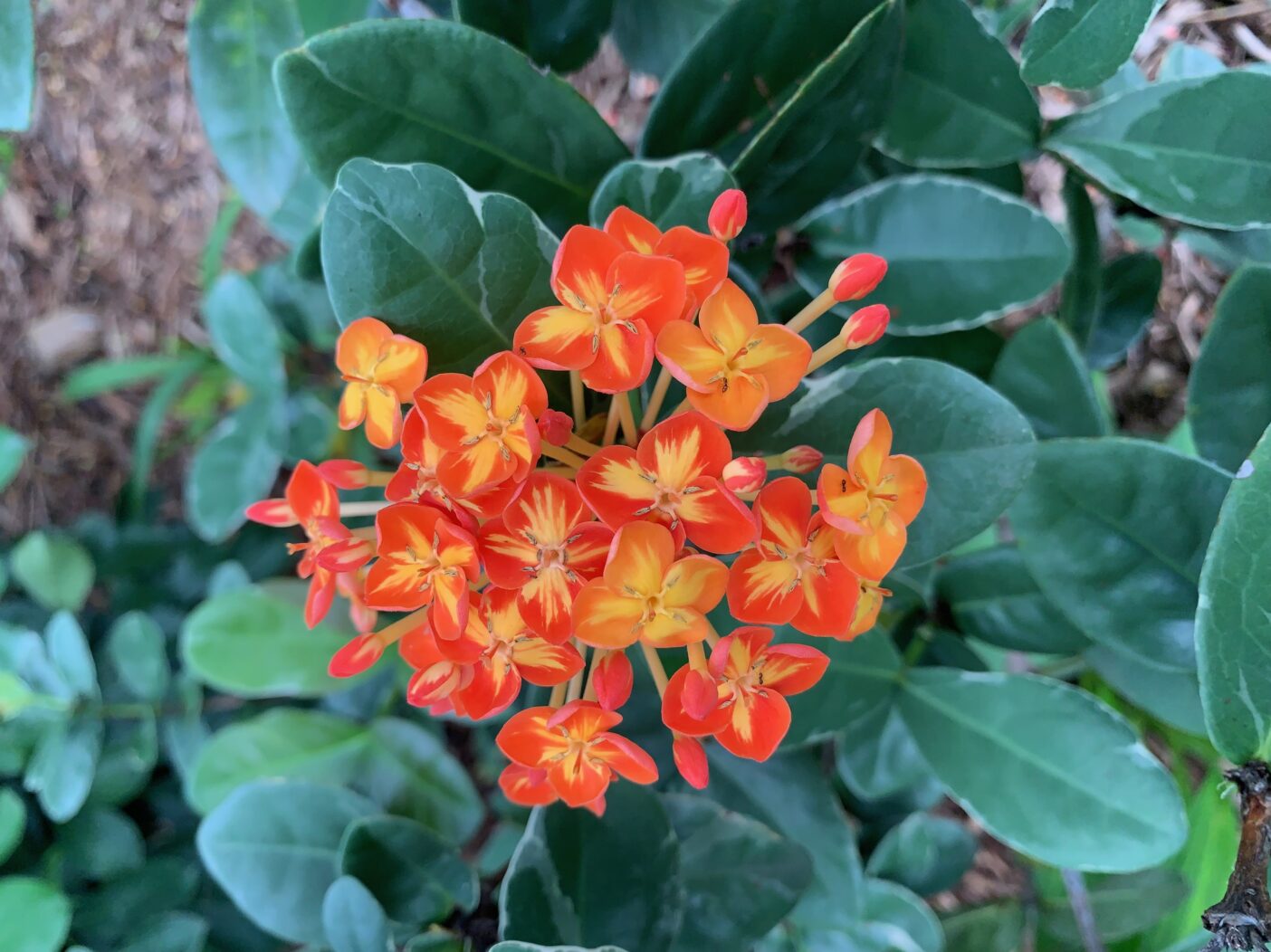
Ixoras are under-appreciated plants that should get more attention. Their delightful clusters of tubular flowers come in a wide range of colors: white, cream yellow, pink, orange, and red, and they bloom year-round. Some even have mixed colors, like one of my new favorites, Ixora ‘Bicolor.’ Its orange-red flowers have a starburst of yellow at the center. What’s not to like?

Perhaps the reason why Ixoras don’t get their due is because they are so often used as a formal hedge on property lines. Constantly sheared, there are few opportunities to view the colorful flowers. Far more satisfying is the use of Ixora cultivars as naturally growing shrubs. This is the practice we use at the Garden, and the trick is to choose the right size. Ixoras can be small, like one of my old favorites, Ixora ‘Pink Pixie,’ which tops out at about 2 feet. A larger shrub in all respects, Ixora ‘Singapore’ can grow over 5 feet tall, with huge clusters of scarlet flowers. You can see examples of our Ixora collection in the Lea Asian Garden.

Most Ixoras will flower better in full sun, but they can also take dappled shade. They need regular moisture and mulch. In our alkaline soil, they also thrive on regular fertilizer that includes chelated iron. In case of a cold spell, they may lose their leaves, but they are usually not seriously damaged. The last time this happened in Southwest Florida was more than 10 years ago.
Although you will frequently see Ixora cultivars with a species name, Kirsten Albrecht Llamas, author of Tropical Flowering Plants warns, “Species identification of highly manipulated cultivated plants is a reckless undertaking.” Rather than worry about which species you are growing, I recommend choosing these gloss-leaved, vibrant plants to suit your stylistic preference or serve an aesthetic purpose in your garden. Lucky for all of us, plant breeders have worked for decades to offer an array of Ixora options.
 About the Author
About the Author
Liz Chehayl is the Brian Holley Curator of Collections at Naples Botanical Garden. She was raised in St. Louis, where she was a frequent visitor to Missouri Botanical Garden, but she really discovered the delights of tropical plants when she moved to Naples almost 20 years ago. She is an active member and former president of Naples Garden Club.


